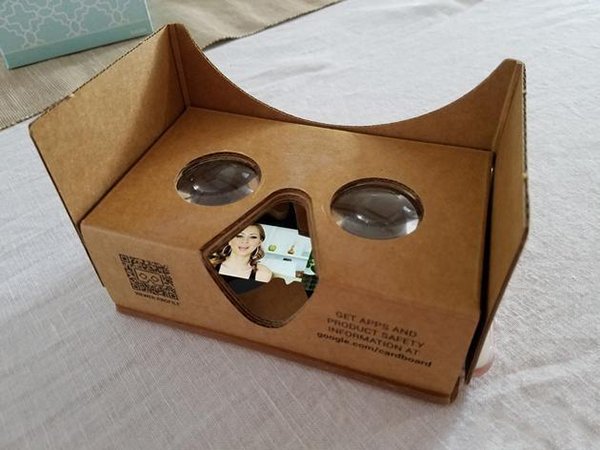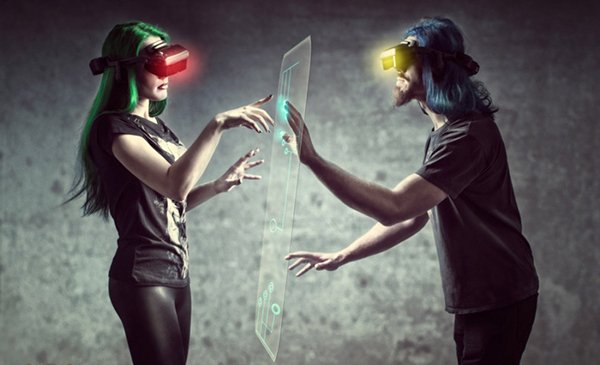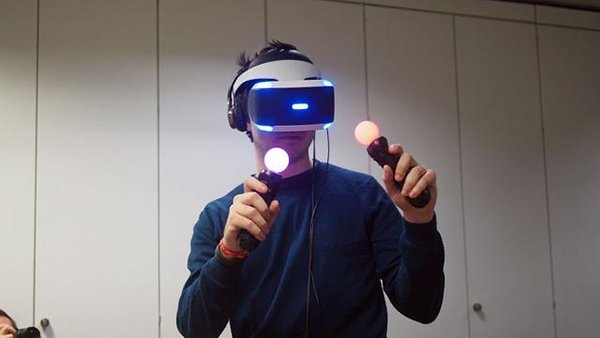In the past few years, virtual reality and augmented reality technologies have expanded into games beyond the world, such as media, marketing and education.

VR/AR creates an immersive experience that enhances the world around us, or sometimes takes us to a completely different world. The rapid growth in this area has led to unexpected innovations. However, there are many challenges on the way forward, especially when designing and producing VR and AR experiences.
To this end, the author interviewed several experts in the industry and hoped to tap a series of best practices to provide you with lessons for starting your virtual reality and augmented reality projects. Whether you are a marketer, entrepreneur, or designer, these tips will help you to succeed.
What people are looking for is experience, not technology.
1. Clear goals
AR and VR experiences are powerful, but they should return to a clear brand or business goal. Before we go further, it is important to ask yourself why you are pursuing this type of media and what you want to achieve. For example, if your goal is visibility, VR may not be a good solution given the current low penetration rate. However, for tech company training programs, training through VR/AR may be a very powerful method.
Ray Soto, emerging technology design director of the media group Gannett, is working with editorial teams across the country to bring interactive news coverage to the audience. Before they began to work hard, the first thing their team did was determine whether the immersive experience could enhance or improve storytelling. He said: "The production of content as an immersive experience must have a clear value, not just through traditional means."
After testing, Soto said the next step is to determine which specific type of experience is best for their project. The AR experience adds a layer of digital dimensions to the existing world, while the VR experience conveys users to different worlds. In addition, choosing the right platform is also important because it is difficult to achieve cross-device and format optimization. For example, an experience that fits Google Cardboard (approximately $15) is difficult to translate into an HTC Vive-friendly experience ($800).

2. Encourage personal experience
One of the biggest challenges in VR and AR design is that most users have a limited reference frame to understand the look or feel of these experiences. When using more traditional media formats (printing, television, or even digital), we can assume that users have been interacting with similar content for many years. On the other hand, the immersive experience is so fresh, many people lack first-hand experience, and it is difficult to provide actionable and constructive feedback.
The key first step of any project is to encourage users to get first-hand experience.
David Title, chief consumer engagement officer at Bravo Media, stressed that encouraging users to get first-hand experience is a key first step for any project. He said: "The most important factor is to promote personal experience. Before launching any program, we will show users some similar examples and invite them to our office to try. In this case, watch the video or read about VR and AR articles are not enough."
3. Adopt first-person design
In a sense, the inherent design challenges of VR and AR are more technical than they are. As the title points out, this is the only true first-person media format. Therefore, we should adopt completely different ideas.
He said: "If you look at other media formats, books, plays, shows, etc., each is a third-person experience, and the creator controls everything the audience feels. Instead, the audience is in a virtual experience. The perspective is the first personal statement that the creator of the media cannot control him or her, and they should not try to control them."
Considering that VR and AR activities are called "experience", all this makes sense. The immersive experience is a non-linear and non-narrative experience, which means that the creator must have a certain rule, and Thai investment is called "first-person design."
Taitou said: "The first-person design means designing an experience for others. This of course means that the creators have given up some kind of control, but they are doing so to create a platform that no other platform or media format can do. Experience."
First-person design is especially important for VR experiences because watching even sound affects the user's ultimate feelings. The environment should complement this story, which in turn should complement the environment.
The best VR and AR can increase or enhance pre-existing behavior.
Soto said: "If something looks or sounds unfamiliar, the brain will let us out of the immersive experience. Refer to spatial awareness, for example: If the experience takes up too much space, the user may get lost. Too small, you have It may create a claustrophobic environment."
Mike Dory, general manager of Spies & Assassins, added that the best VR and AR can increase or enhance pre-existing behavior. For example, immersive houses visit or participate in virtual seminars.

4. Find a suitable service provider
One of the obstacles facing companies seeking services for AR and VR production is that the novelty of the industry leads to uneven services in the market and it is difficult to distinguish them. Every day, new immersive technology emerges, and even more "mature" service providers enter the office for only a few years. Thai investment advises that companies should focus on the supplier's portfolio to determine if they meet your needs.
He said: "No one has yet been able to display a large number of works, but (service providers) should share part of the proof of concept to demonstrate their capabilities."
Layne Harris, 360i's deputy director of innovation technology, added that customers looking for AR and VR design resources should select partners based on space design skills, just like interior designers.
He said: "(for immersive format), you need to consider the overall scene. And, unlike games, VR is a slower adaptation, you need to provide users with time to adapt to the environment. Choose to have 3D sound design experience The partners, because the sound can significantly improve immersion."
Another consideration is that immersive experiences such as VR and AR reflect and therefore require a mix of design and code. Gannett’s Soto said: “You should look for a partner that combines outstanding (developer) and outstanding designers. In the early days of VR, the development of technology exceeded design and UX. Today, design is catching up. ."
5. There are big differences in the design of 2D applications and VR
One of the biggest challenges faced by content creators in this area is that there are fewer similarities between moving from a design perspective and VR. The most experienced interaction designers can stand out in the "mobile era", but they soon discovered that immersive experiences such as AR and VR are in some unknown areas.
Immersive experience requires a mix of design and code.
According to Jordan Gurrieri, founder and chief operating officer of VR/AR application developer Blue Label Labs, although designers can apply some of the mobile domain experience and best practices to VR, create these The experience team will need to test new ways. In most of these experiences, there are basically two layers of design: application design (how to navigate to the experience) and experience design (how to navigate in it).
"Menu and breadcrumb navigation, content libraries and settings are all part of the VR experience," he said. "The difficulty is that some are part of the VR experience itself, just like we saw in the Google Cardboard demo application. And while others are stored in a more traditional application experience beyond 'VR mode', designers need to hone their skills in both environments."

6. Clear time limit
The status quo in the media and marketing industry is that the project may only appear at the last minute: a sponsorship opportunity for the latest event; a discounted advertising space or other major events during the Super Bowl, among others. Everyone is likely to accept a time-critical project.
Given the relative complexity of VR and AR projects, a rushed schedule may lead to a poor user experience. Experts suggest that these projects should be carried out within 12 to 16 weeks before the scheduled release window, although it is not uncommon to start within 1 to 3 months and make creative concessions to obtain more aggressive deadlines.
The AR and VR experience should be consistent with a clear brand or business goal.
Of course, there are a series of variables that can affect the project schedule. For example, a VR experience may need to use 3D video capture or 3D CG capture. Real-time capture usually requires higher budget and time costs, after all, capturing, editing and processing all take a lot of time.
In addition to the more sophisticated design and development process, the immersive experience is also very different from the traditional format. Bravo Media's Thai Investment said: “Since the only way for customers to review is through the device, editing and reviewing is a challenge. One way to quickly complete this process is to set up a mirrored version of the system so that customers can preview it remotely. â€
When developing systems for relatively inconvenient platforms, such as Oculus Rift or HTC Vive, it is more important to create these virtual review environments. For "popular" platforms (like Google Cardboard), the technology needed to provide customers with reviews and feedback is relatively simple. But no matter what you develop for your platform, user testing is an important part of the review process.
7. Iteration, testing, improvement
Bravo Media has been developing immersive experiences for more than 10 years and has created innovative augmented reality experiences for American singer Kid Cudi's British choir Black Eyed Peas. Since then, the popularity of smart phones and mobile video technology has fundamentally changed the industry and continues to grow at a high rate.
Taitou said: “All we deal with is the planning version. When it comes to VR and AR, technology is getting to market faster than ever before. Smaller companies are changing the situation and pushing bigger companies to release powerful Technology, but not without major challenges."
Harris of 360i added that one way for brands and distributors to excavate under a controllable budget is to “build small-scale, small-volume experiences,†and pilot trials to test consumer response before large-scale investment. Customers are learning, designers and developers are learning.
VR and AR creators should regard narrative as their Polaris.
Harris said: "With regard to VR development, UX best practices still do not have a solid guideline. We are discovering more attractive ways to interact with the virtual reality world. We have defined certain things, such as not moving horizontal lines. , otherwise you will get sick, but how can we interact with objects, move, and interact with UI elements, which is still in its infancy."
Although VR and AR designs have unique challenges (such as designing a first-person environment), producers should use Narratives as Polaris.
Dory said: “All things seem to be 'something year', and we think that this year is the first year of VR. From the (product) release point of view, I do not oppose, but immersive technology should not be regarded as Bad panacea for marketing ideas. People are seeking experience, not technology. It's all about narrative."
For Oppo Touch,Front Touch Screen Glass,Touch Screen For Reno 3 Pro,Glass Touch Screen For Oppo
Dongguan Jili Electronic Technology Co., Ltd. , https://www.ocasheet.com